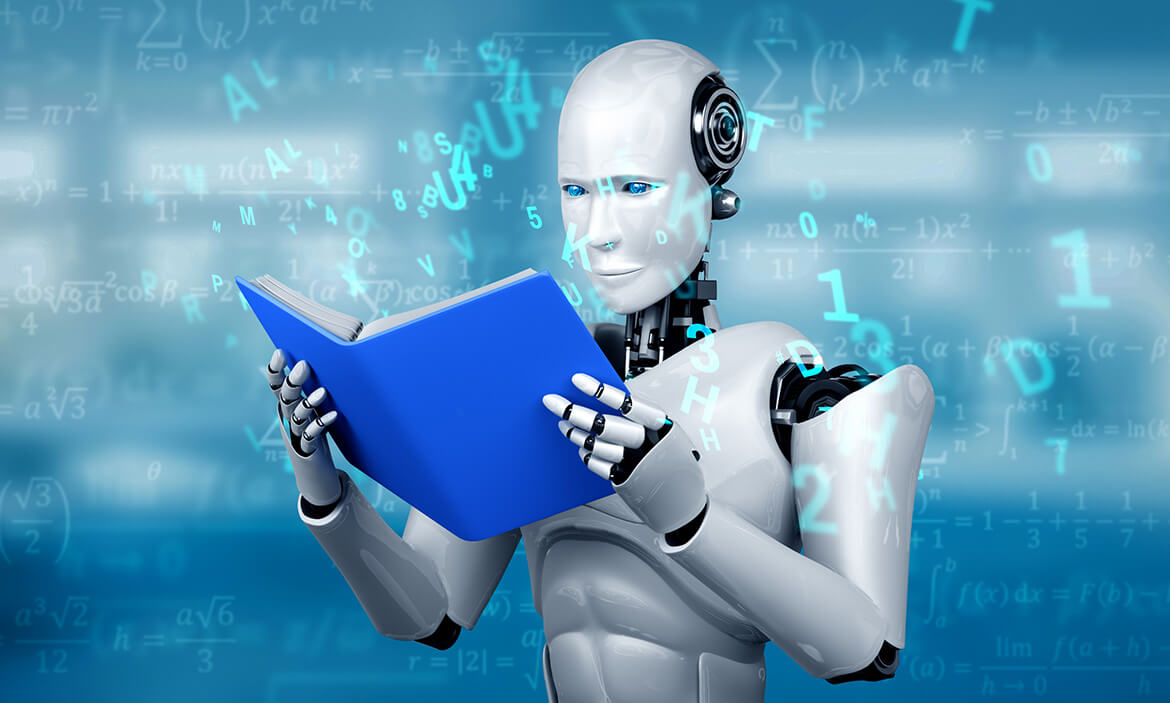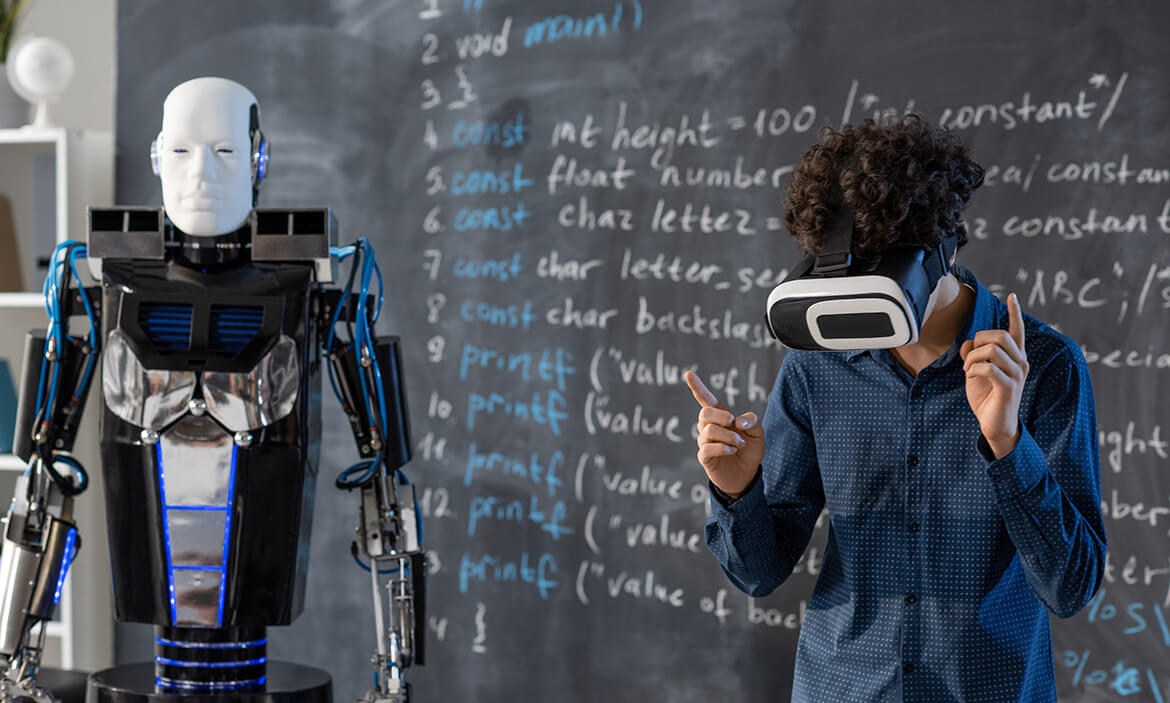SesenGPT – Advancing Life Sciences Translation with AI
– AI-Powered. Human-Refined. Life Sciences Focused.
SesenGPT is our proprietary AI model, custom-trained for the highly specialized demands of pharmaceutical, medical, and regulatory translation. Unlike generic AI models, SesenGPT is built on validated life sciences corpora, ensuring accuracy, compliance, and linguistic precision.
Powering Life Sciences Translation with AI-Driven Accuracy and Human Oversight
SesenGPT is designed to accelerate global regulatory submissions, improve translation consistency, and enhance efficiency for life sciences companies. By seamlessly integrating advanced AI technology with human linguistic expertise, SesenGPT delivers submission-ready, regulatory-compliant translations tailored for the pharmaceutical, biotech, and medical device industries.
Why SesenGPT?
Optimized for Regulatory, Medical, and Scientific Content
- Custom-trained on validated life sciences corpora, including clinical trial protocols, drug labeling, and safety reports.
- Ensures precision in medical, pharmaceutical, and research-related terminology.
Ensures Compliance with Industry Standards
- Developed to meet the rigorous regulatory requirements of EMA, FDA, PMDA, NMPA, and other global health authorities.
- Supports ISO 17100-certified translation workflows for regulatory and scientific documentation.
Secure, Scalable, and Hosted on AWS
- Enterprise-grade security with AWS hosting, ensuring data protection, confidentiality, and compliance with HIPAA & GDPR.
- Scalable AI-powered translation solutions tailored for pharmaceutical companies, medical device manufacturers, and clinical research organizations.
SesenGPT combines AI-driven efficiency with human linguistic oversight to deliver fast, accurate, and regulatory-compliant translations for the life sciences industry.
Introduction to SesenGPT
SesenGPT is Sesen’s proprietary AI-powered translation model, specifically designed for life sciences translation, including regulatory, medical, and scientific content. Unlike general-purpose AI models, SesenGPT is built exclusively for the complexities of life sciences, ensuring that translated content is both accurate and compliant with industry standards.
Key Features of SesenGPT:
- Custom-Trained on Life Sciences Data – Uses specialized corpora from regulatory filings, clinical trial documentation, and medical research.
- Human-in-the-Loop Review – AI-assisted translations are always validated by expert linguists to ensure precision and compliance.
- Developed Using Open-Source LLMs – Built on Amazon AWS’s AI framework, customized to address the unique linguistic challenges of life sciences translation.
SesenGPT empowers life sciences organizations with faster, smarter, and more compliant AI-powered translation solutions—without compromising quality or regulatory integrity.
The SesenGPT Advantage: AI Tailored for Life Sciences
SesenGPT is more than just an AI translation model—it is a specialized solution built to meet the unique localization demands of the life sciences industry. Unlike generic AI models, SesenGPT is specifically trained on validated medical, pharmaceutical, and regulatory datasets, ensuring unparalleled accuracy, compliance, and linguistic consistency.
Handles Complex Terminology with Precision
- Medical and scientific translations require a deep understanding of specialized terminology that generic AI models often misinterpret.
- SesenGPT is trained on validated life sciences corpora, ensuring translations align with industry-approved terminology databases such as MedDRA, SNOMED CT, and WHO Drug Dictionary.
Ensures Regulatory Compliance Across Global Markets
- Life sciences companies operate in a highly regulated environment where translation accuracy is critical for regulatory submissions, labeling, and clinical documentation.
- SesenGPT is designed to support translations that comply with FDA, EMA, PMDA, NMPA, and other global health authorities’ standards.
Supports the Entire Life Sciences Ecosystem
- Developed for organizations across the life sciences sector, including:
- Pharmaceutical companies – Global regulatory submissions, package inserts, and clinical trial documents.
- Biotech firms – Scientific research papers, patents, and drug discovery reports.
- Medical device manufacturers – IFUs (Instructions for Use), user manuals, and compliance documentation.
- Clinical research organizations (CROs) – Study protocols, investigator brochures, and regulatory filings.
- Healthcare providers – Patient education materials, consent forms, and medical reports.
Scalable, Efficient, and Consistent
- Traditional translation workflows can be time-consuming and costly, especially for large-scale regulatory submissions.
- SesenGPT accelerates translation processes, enabling faster turnaround times while maintaining consistency across multilingual content.
- The model is scalable to support high-volume projects, ensuring that companies can expand into new markets efficiently and compliantly.
With SesenGPT, life sciences companies can confidently navigate global regulatory landscapes, improve translation efficiency, and maintain the highest standards of linguistic and scientific accuracy.
Precision-Driven AI: How SesenGPT is Optimized for Life Sciences Translation
SesenGPT is engineered for high-stakes regulatory, medical, and scientific translation, ensuring accuracy, compliance, and linguistic precision unmatched by generic AI models.
Custom-Trained on Life Sciences Corpora
- Validated Industry-Specific Data – Built on datasets from pharmaceutical regulatory filings, clinical trial protocols, drug labeling, and peer-reviewed medical research.
- Regulatory Terminology Consistency – Integrates industry-approved terminology databases (e.g., MedDRA, SNOMED CT, WHO Drug Dictionary).
- Global Standards Compliance – Aligns with regulatory frameworks from EMA, FDA, PMDA, NMPA, ensuring content is fit for submission and market approval.
Regulatory Compliance & Accuracy
- ISO 17100-Certified Workflows – Adheres to certified translation processes for regulatory and medical documentation.
- Precision for Submissions & Labeling – Optimized for clinical trial documentation, regulatory filings, and patient safety materials to meet stringent compliance requirements.
- Human-Validated AI Output – AI-generated translations undergo rigorous linguistic and regulatory review to mitigate errors and ensure compliance.
Domain-Specific Intelligence
- Specialized in Life Sciences Linguistics – Unlike general LLMs, SesenGPT is fine-tuned for medical, pharmaceutical, and scientific discourse.
- Contextual Accuracy – Recognizes complex scientific structures, dosage guidelines, and clinical terminology, reducing translation ambiguity.
- AI-Human Hybrid Approach – Integrates expert linguistic reviewers and human-in-the-loop workflows to enhance translation reliability and domain accuracy.
SesenGPT ensures submission-ready, compliant translations while maintaining the highest standards of accuracy and regulatory adherence.
Key Benefits of SesenGPT
SesenGPT is engineered to meet the precision, compliance, and scalability demands of life sciences translation. By combining domain-specific AI training with human linguistic expertise, it delivers high-accuracy, submission-ready translations while streamlining global regulatory workflows.
High Accuracy in Medical & Scientific Translation
- Domain-Specific Precision – Trained on validated life sciences corpora, ensuring accurate handling of medical terminology, drug formulations, and biotech jargon.
- Context-Aware Translation – Recognizes scientific structures, dosage units, and chemical nomenclature, reducing errors common in generic AI models.
Regulatory-Focused and Compliant
- Submission-Ready Translations – Optimized for regulatory filings, clinical trial documentation, and labeling to meet compliance requirements.
- Industry-Aligned Standards – Adheres to FDA, EMA, PMDA, NMPA, and ISO 17100 guidelines for regulatory accuracy and consistency.
Scalable & Efficient
- Accelerates Global Submissions – Reduces turnaround times for high-volume pharmaceutical and medical device translations.
- Consistent Across Multiple Languages – Ensures uniformity in multilingual regulatory content, minimizing rework and inconsistencies.
Human-AI Collaboration
- Linguistic & Subject Matter Expertise – Works alongside human translators and medical SMEs to validate AI-generated translations.
- Hybrid Approach for Quality Control – AI-assisted translations undergo human post-editing and compliance verification to enhance accuracy.
Customizable for Client Needs
- Tailored AI Training – Can be fine-tuned for specific pharmaceutical, biotech, and medical device companies based on proprietary terminology and workflow requirements.
- Flexible Deployment – Adaptable to enterprise translation management systems for seamless integration with existing localization workflows.
SesenGPT combines AI efficiency with expert human oversight, delivering scalable, compliant, and high-precision translations for the life sciences industry.
How SesenGPT Differs from Generic LLMs
Unlike general-purpose AI models, SesenGPT is specifically designed for life sciences translation, ensuring accuracy, regulatory compliance, and linguistic precision. While mainstream LLMs are trained on vast amounts of general web content, SesenGPT is built on validated life sciences data, making it uniquely suited for pharmaceutical, biotech, and medical translations that require strict adherence to scientific and regulatory standards.
Trained Exclusively on Life Sciences Data
Unlike general LLMs (e.g., ChatGPT, Google Gemini, or Claude), SesenGPT is not trained on broad web content but on validated life sciences corpora. Its dataset includes pharmaceutical regulatory filings, clinical trial protocols, medical research papers, and drug labeling requirements, ensuring translations maintain domain-specific accuracy and compliance with industry best practices.
Regulatory & Industry-Focused Adaptation
SesenGPT is designed to interpret and process structured regulatory content, including clinical protocols, drug safety reports, and patient information leaflets. Unlike general AI models, which struggle with regulatory formatting and industry-specific phrasing, SesenGPT ensures submission-ready translations that meet global health authority requirements (EMA, FDA, PMDA, NMPA).
Enhanced Terminology Management
Consistency is critical in life sciences translation, which is why SesenGPT integrates industry-standard terminology databases, including MedDRA, SNOMED CT, and WHO Drug Dictionary. This ensures precise translation of medical terms, drug names, and regulatory language, eliminating inconsistencies that can lead to misinterpretation in clinical and pharmaceutical settings.
Avoids AI Hallucinations & Misinformation
A major drawback of general AI models is their tendency to hallucinate data—generating plausible but factually incorrect translations. SesenGPT is carefully optimized to minimize AI-generated inaccuracies through human validation workflows. Every AI-assisted translation is reviewed and refined by expert linguists and regulatory specialists, ensuring scientific integrity, compliance, and factual accuracy.
By combining domain-specific training, regulatory adaptation, advanced terminology management, and human oversight, SesenGPT delivers precise, reliable, and compliant life sciences translations—outperforming generic AI models in medical, pharmaceutical, and regulatory applications.
Technology-Enabled Human Translation: A Hybrid Approach
SesenGPT leverages AI-powered translation while ensuring that every output is refined, validated, and optimized by human expertise. This hybrid approach enhances accuracy, compliance, and linguistic precision, making it ideal for life sciences translation where errors can have regulatory and safety implications.
Human-in-the-Loop Translation
AI-generated translations are never used as-is. Every output is reviewed, corrected, and validated by Sesen’s expert linguists, medical translators, and regulatory specialists. This process ensures that scientific terminology, dosage instructions, and compliance language are accurately translated while maintaining clarity and consistency.
Machine Translation Post-Editing (MTPE)
SesenGPT seamlessly integrates with MTPE workflows, allowing human translators to enhance AI-generated content for flawless, submission-ready translations. This ensures that clinical trial documents, regulatory filings, and pharmaceutical labeling meet the strict quality and compliance standards required by health authorities such as the FDA, EMA, and PMDA.
Custom AI Model Enhancement
Sesen can fine-tune SesenGPT to meet specific client needs, adapting it for pharmaceutical companies, biotech firms, and medical device manufacturers. This customization enhances domain adaptation, improves terminology accuracy, and aligns translations with proprietary datasets, ensuring that SesenGPT delivers specialized, high-precision translations for each organization’s unique requirements.
By combining AI efficiency with expert human oversight, SesenGPT ensures fast, scalable, and compliant translations without compromising on accuracy or industry-specific nuances.
Data Security & Compliance
SesenGPT is designed with enterprise-grade security and regulatory compliance to protect sensitive life sciences data. With AWS-hosted infrastructure, strict access controls, and encrypted workflows, Sesen ensures that client data remains confidential, secure, and compliant with global regulations.
Hosted on AWS for Enterprise-Level Security
SesenGPT runs on AWS’s secure cloud infrastructure, leveraging robust encryption, threat detection, and compliance frameworks to protect sensitive medical and regulatory data. It adheres to HIPAA, GDPR, and ISO 27001 standards, ensuring data privacy, integrity, and regulatory compliance across international markets.
Client Data Protection
Unlike generic AI models, SesenGPT does not use client data for retraining or external processing. All translations remain strictly confidential, preventing unauthorized access or unintended data exposure. This ensures that proprietary regulatory filings, clinical documentation, and patient-sensitive content are handled with the highest level of security and discretion.
Strict Access Control & Encryption
SesenGPT employs multi-layer security protocols, including role-based access controls (RBAC), data encryption (AES-256), and secure API authentication to protect sensitive information. This ensures that only authorized personnel can access or process regulated content, minimizing risks associated with data breaches, cyber threats, and compliance violations.
By integrating advanced security protocols with industry-best compliance measures, SesenGPT provides trusted, high-security AI translation solutions for pharmaceutical, biotech, and medical organizations worldwide.
Getting Started with SesenGPT
SesenGPT provides custom AI-powered translation solutions for pharmaceutical, biotech, and medical device companies.
- Tailored AI-Powered Translation Solutions Sesen works with clients to customize AI workflows, terminology management, and human quality control to meet regulatory and linguistic requirements.
- Schedule a Demo See how SesenGPT can streamline regulatory and scientific translations, improving speed, accuracy, and compliance.






